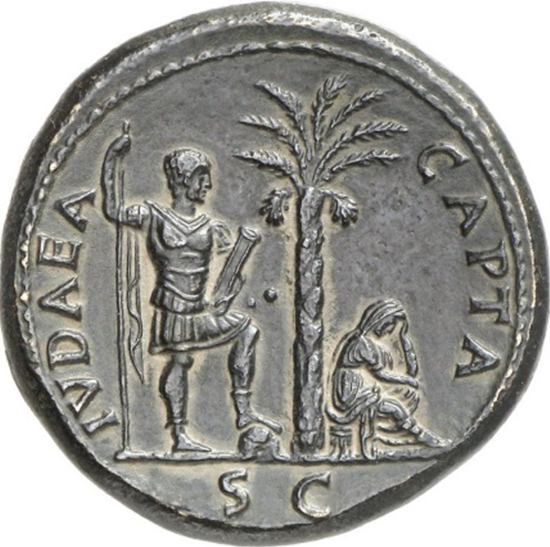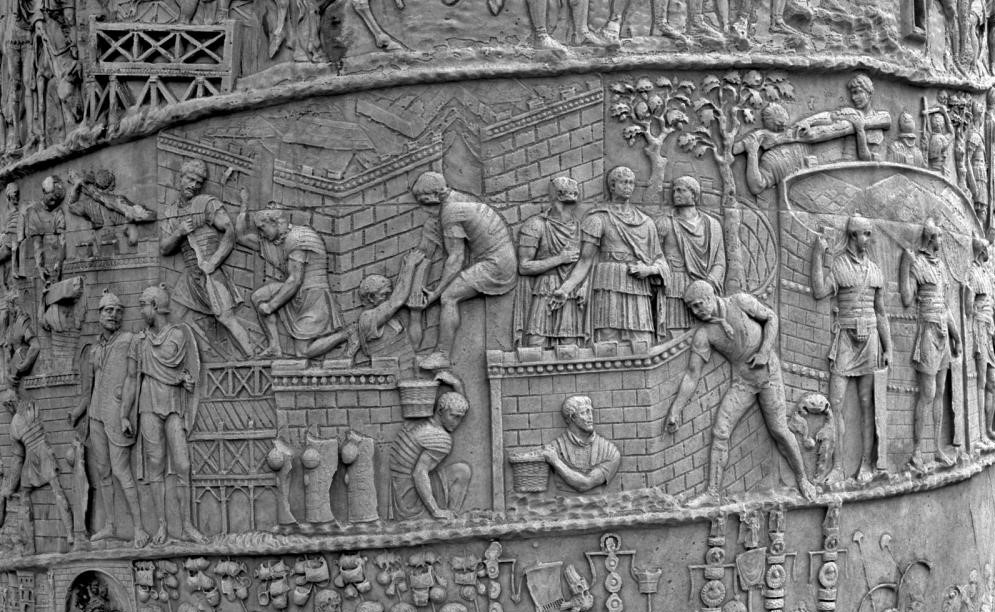Prof Dr Felix K Maier, Professor for Ancient History at University of Zurich, explores the paradoxical dynamics of different identities in the multicultural Roman Empire
My history research project analyses the dynamics of different identities in the Roman Empire from around 50-150 AD.
The Roman Empire: A ‘story of a success’

The Roman Empire is generally considered a ‘story of a success’ concerning the integration of the conquered peoples. The Romans surpassed other empires regarding temporal extension and maintained their power with little military presence.
However, it was not only open rebellions that could have threatened Roman domination; it was also – and quite paradoxically – the successful integration of conquered peoples. This had to do with a couple of interdependent aspects.
The self-image of the Roman conquerors was based on being different from the defeated ‘others’. This becomes clear not only in important texts by Roman authors, but also in the iconography of Roman monumental architecture. As a representative example, the poet Virgil proclaimed in his national epic Aeneid that ‘others’ (meaning the highly civilised Greeks) might be better at astronomy, rhetoric, or sculpture.
The strength and task of the Romans, however, saw Virgil in other fields: “You, Roman, be sure to rule the world (be these your arts), to crown peace with justice, to spare the vanquished and to crush the proud.” (1)
Or the Romans used another stereotype – especially in the context of non-Greek peoples – to emphasise their superiority as civilised conquerors over the ‘barbarian’ subjects. This ‘difference’ is presented iconographically on the famous Trajan’s Column in Rome, and numerous coins also underline the hierarchy between the conquerors and the conquered (fig. 1 and 2).
Traditional notions of ‘Being’ Roman
At the same time, more and more non-Romans immigrated to Rome from around the middle of the 1st century AD, and the degree of mobility increased throughout the Roman Empire, boosting the mixing of cultures. This development raised concern among Romans. Existing opinions are reflected in satirical texts of Roman authors like Juvenal or Martial.
In their ironic commentaries on current issues, they make fun of Romans bewildered by hybrid identities, e.g., by Greek, Gallic or Syrian elites, who perfectly adapted to the Roman way of life and were sometimes ‘better’ Romans than their role models. Juvenal and Martial tell us an interesting story: Established ideas of what was supposed to be Roman, Greek, non-Roman, or ‘barbarian’, all of a sudden were constantly changing.
Traditional notions of ‘Being Roman’ were undermined and could become something different from what they were considered to be previously, a process that affected power relations between the Romans and the conquered peoples.
Theories and Models from Sociology and Political Sciences
In my project, postcolonial theories and models from Sociology and Political Sciences are applied to ancient contexts to analyse all the consequences that were linked to these dynamics. One of these interdisciplinary approaches is the ‘hybridity and mimicry’ concept, established by the Indian-English scholar and critical theorist Homi K Bhabha in his book The Location of Culture.
Bhabha’s concept of hybridity and mimicry is beneficial to reveal a paradox, but also a powerful effect of colonisation: In his view, the colonised often adopt the coloniser’s way of life and try to imitate it.
According to Bhabha, through this mimicry, the coloniser’s self-image, his identity as ruler and as being ‘different’ from everyone else gets repeatedly undermined. The colonial discourse that legitimised the power is destabilised.
While Bhabha mainly developed his concept concerning the British Empire, his ideas – to a certain extent – also relate to the analysis of conquered people in the Roman Empire. They can help to understand a phenomenon that happened bottom-up.
By integrating more and more peoples into the administration of the empire, the distinction so carefully constructed by the Romans was no longer clear; the lines between conqueror and conquered blurred.
This enormously affected the hegemonic discourse with which the Romans legitimised their superiority. How could Rome justify its power without clearly distinguishing between rulers and ruled?
Ancient History project
My project studies how hybridity and mimicry, blurring established boundaries, also subverted the classic binary discourse of the conquering Romans and the conquered non-Romans and how the Romans reacted to these developments.
Reference
- Verg. Aen. 6.847-853 https://www.perseus.tufts.edu/hopper/text?doc=Verg.+A.+6.847&fromdoc=Perseus%3Atext%3A1999.02.0054

This work is licensed under Creative Commons Attribution-NonCommercial-NoDerivatives 4.0 International.


